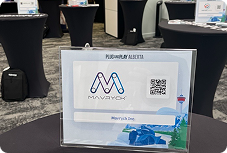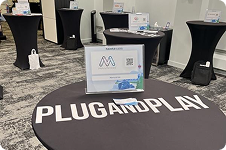Mavryck Blogs
Why Risk Registers Fail
Why Most Risk Registers Fail — And What You Can Do About It
The Reality of Risk Registers
In the world of construction and infrastructure, every project claims to have a risk register. But if risk management is "under control," why do so many projects still experience unexpected delays, cost blowouts, or last-minute claims? The answer is uncomfortable but simple: most risk registers don’t work. They exist — but they don’t evolve, adapt, or inform. And that’s a costly blind spot.
The Problem: Risk Registers Are Often Static, Siloed, and Stale
- They Go Stale: Many risk logs are created at the start of a project... and forgotten. Risks are logged with vague descriptors, no real-time updates, and no connection to what’s actually happening on-site.
- They Miss Live Signals: Risks change with progress, sequencing, access, procurement, and field conditions. Without real-time detection, these signals are missed.
- They’re Siloed from Project Data: A disconnected risk register doesn’t reflect schedule slips, material delays, or reversed progress. It can't warn you when trouble is brewing.
The Impact of a Broken Risk Register
- You're blindsided by issues that were preventable.
- Delays and cost overruns escalate with no early intervention.
- Project leadership walks into executive meetings with a false sense of control.
- Stakeholders lose trust when active logs fail to surface issues.
The Solution: Turn Risk Logs into Risk Intelligence
At Mavryck, we've seen this story repeat across hundreds of projects. That's why we've built tools to transform passive logs into proactive intelligence.
✅ Pattern Recognition
Instead of relying on manual updates, our system detects real-time anomalies across schedule, cost, and progress — identifying the early signals of risk before they become events.
- Progress reversals
- Sequencing conflicts
- Late access to work fronts
- Delay precursors in clustered activities
✅ KnowMile
Why reinvent the wheel on every project?
KnowMile analyzes past project risk registers — from similar scopes, contract types, and geographies — and identifies patterns you can learn from. It helps teams identify what's missing, spot recurring blind spots, and prioritize smarter.
🧩 What You Can Do Today
Even if you're not using Mavryck yet, here are three immediate steps to improve your risk visibility:
- Audit Your Current Register: Remove vague, outdated, or duplicated risks. Clarify owners, triggers, and mitigation steps.
- Cross-Reference with Live Project Data: Compare risk items with actual progress, float erosion, and access logs. If the data contradicts your register — believe the data.
- Ask: Is This Telling Me Something New? If your risk log isn't evolving or offering new insights week to week... it's not working.
✅ Final Word
Risk management isn't a spreadsheet — it’s a living, dynamic process. And in complex infrastructure delivery, the cost of being late is greater than the cost of being wrong.
Let’s change how risks are managed — from reactive to predictive.
Call to Action
Want to know if your risk log is still telling the truth? Let us run a quick scan on your project.
Subscribe and stay up-to-date on Mavryck news, exclusive offers, and more.


